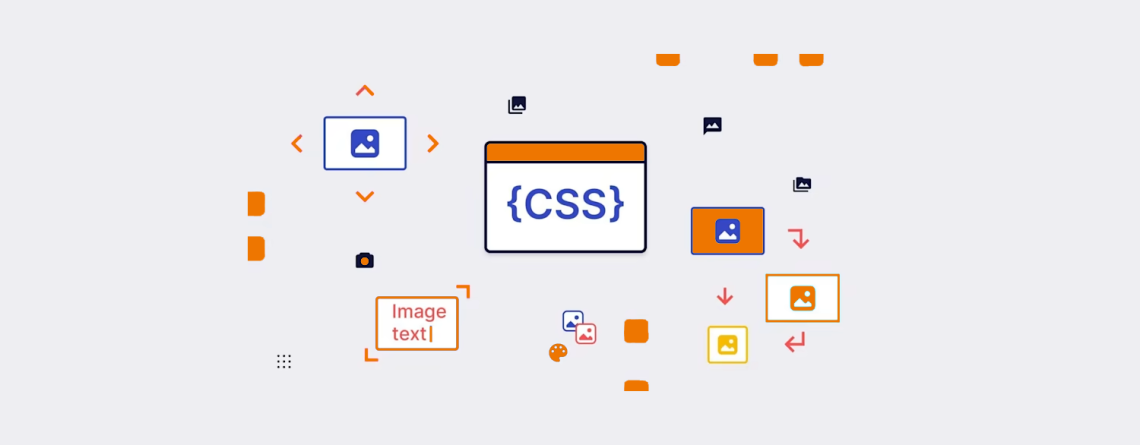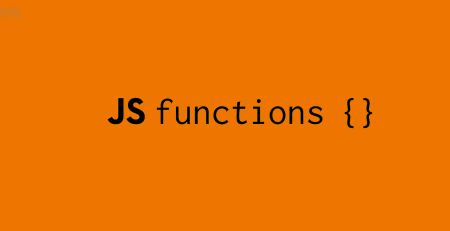CSS Future: Advancing with Functions and Mixins
Table of Contents
Introduction
Although web development is always changing, CSS (Cascading Style Sheets) is still essential for creating flexible and aesthetically pleasing websites. The advent of functions and mixins is one of the most interesting developments in the considerable breakthroughs that CSS has made over the years. When it comes to formatting web pages, these potent tools give developers more efficiency, versatility, and reusability. We’ll dive into CSS’s future in this in-depth tutorial, examining how functions and mixins are changing the way web developers approach style.
Chapter 1: Understanding CSS Functions and Mixins
In this chapter, we’ll delve into the fundamental concepts of functions and mixins in CSS preprocessors like Sass, Less, and Stylus. We’ll explore how these tools enable developers to write more modular, reusable, and maintainable stylesheets.
1.1 Functions
CSS functions allow developers to encapsulate logic and calculations into reusable units, making it easier to manage complex styling requirements. Let’s examine how functions work with a simple example using Sass:
// Define a function to calculate the width based on the number of columns
@function calculateWidth($columns, $totalColumns, $containerWidth) {
@return ($columns / $totalColumns) * $containerWidth;
}
// Usage example
.container {
width: calculateWidth(2, 12, 960px); // Outputs: 160px
}In this example, the calculateWidth() function takes three parameters: $columns, $totalColumns, and $containerWidth. It calculates the width of a container based on the number of columns, total columns, and container width, providing flexibility and reusability in defining widths across different layouts.
1.2 Mixins
Mixins are reusable sets of CSS declarations that can be included or “mixed in” to style different elements. They’re particularly useful for applying vendor prefixes, creating utility classes, or defining complex layout patterns. Let’s see how mixins work using Sass:
// Define a mixin for flexbox layout
@mixin flexbox() {
display: -webkit-box;
display: -ms-flexbox;
display: flex;
}
// Usage example
.container {
@include flexbox;
}In this example, the flexbox() mixin includes the necessary CSS declarations to enable flexbox layout, ensuring cross-browser compatibility. By abstracting these common styling patterns into mixins, developers can easily apply them to various elements throughout their projects.
1.3 Benefits of Functions and Mixins
Understanding the benefits of functions and mixins is crucial for leveraging their full potential in CSS development. Here are some key advantages:
- Reusability: Functions and mixins allow developers to encapsulate styling logic and reuse it across different parts of a project, reducing redundancy and improving maintainability.
- Modularity: By breaking down styles into smaller, more manageable units, functions and mixins promote a modular approach to CSS development, enhancing code organization and readability.
- Flexibility: Functions and mixins empower developers to create flexible and adaptable styles that can be easily customized or extended, enabling rapid iteration and experimentation in design.
In the next chapter, we’ll explore practical applications of functions and mixins in real-world CSS development, demonstrating how they can be used to create responsive layouts, modular design systems, and more. Stay tuned!
Chapter 2: Advantages of CSS Functions and Mixins
In this chapter, we’ll delve deeper into the advantages of using functions and mixins in CSS development. We’ll explore how these powerful tools contribute to code reusability, modularity, and flexibility, with practical code examples to illustrate their benefits.
2.1 Reusability
One of the primary advantages of functions and mixins is their ability to encapsulate styling logic and reuse it across different parts of a project. Let’s explore this concept further with an example:
// Define a function to calculate font sizes based on a modular scale
@function calculateFontSize($baseSize, $ratio, $step) {
@return $baseSize * pow($ratio, $step);
}
// Usage example
body {
font-size: calculateFontSize(16px, 1.2, 2); // Outputs: 23.04px
}In this example, the calculateFontSize() function calculates a scaled font size based on a base size, ratio, and step. By defining this function, we can easily apply consistent typography scaling throughout our project, ensuring a harmonious visual hierarchy across different elements.
2.2 Modularity
Functions and mixins promote a modular approach to CSS development, allowing developers to break down styles into smaller, more manageable units. Let’s see how mixins enhance modularity with an example:
// Define a mixin for button styles
@mixin button($bg-color, $text-color) {
background-color: $bg-color;
color: $text-color;
padding: 10px 20px;
border: none;
border-radius: 5px;
cursor: pointer;
}
// Usage example
.btn-primary {
@include button(#007bff, #fff);
}
.btn-secondary {
@include button(#6c757d, #fff);
}In this example, the button() mixin encapsulates common button styles, such as background color, text color, padding, and border radius. By including this mixin in button classes, we can easily apply consistent styling to primary and secondary buttons throughout our project, while keeping our codebase modular and maintainable.
2.3 Flexibility
Functions and mixins empower developers to create flexible and adaptable styles that can be easily customized or extended. Let’s explore this flexibility with an example of a grid system:
// Define a mixin for grid column styles
@mixin gridColumn($span, $totalColumns) {
flex: 0 0 percentage($span / $totalColumns);
}
// Usage example
.container {
display: flex;
flex-wrap: wrap;
}
.column {
@include gridColumn(2, 12); // Outputs: flex: 16.66667%;
}In this example, the gridColumn() mixin generates flexible column styles based on a specified span and total number of columns. By including this mixin in column classes within a grid container, we can easily create responsive and customizable grid layouts that adapt to different screen sizes and layout requirements.
Chapter 3: CSS Practical Applications
In this chapter, we’ll explore practical applications of functions and mixins in real-world CSS projects. We’ll demonstrate how these tools can be used to solve common styling challenges and streamline the development process, with code examples to illustrate their implementation.
3.1 Responsive Typography
A key component of contemporary web design is responsive typography, which guarantees the best readability and aesthetics on a range of screens and devices. A unified and aesthetically pleasing user experience may be achieved by using functions to scale font according to viewport size. Let’s see how Sass may be used to do this:
// Define a function to calculate responsive font sizes
@function responsiveFontSize($baseSize, $viewportWidth, $minFontSize, $maxFontSize) {
$minViewportWidth: 320px;
$maxViewportWidth: 1200px;
$fontSize: $baseSize + (($viewportWidth - $minViewportWidth) / ($maxViewportWidth - $minViewportWidth)) * ($maxFontSize - $minFontSize);
@return clamp($minFontSize, $fontSize, $maxFontSize) * 1px;
}
// Usage example
body {
font-size: responsiveFontSize(16, 100vw, 14, 18); // Adjust font size between 14px and 18px based on viewport width
}In this example, the responsiveFontSize() function calculates a responsive font size based on a base size, viewport width, minimum font size, and maximum font size. By applying this function to the body element, we can ensure that text scales proportionally with the viewport width, providing an optimal reading experience on any device.
3.2 Design Systems
Teams may quickly and easily construct unified user interfaces with the help of design systems, which are essential for preserving consistency and coherence throughout a project. It is simple to enforce design standards and reuse code across several components by using mixins to encapsulate design patterns, component styles, and utility classes. Let’s look at how Sass can help with this:
// Define a mixin for button styles
@mixin button($bg-color, $text-color) {
background-color: $bg-color;
color: $text-color;
padding: 10px 20px;
border: none;
border-radius: 5px;
cursor: pointer;
}
// Usage example
.btn-primary {
@include button(#007bff, #fff);
}
.btn-secondary {
@include button(#6c757d, #fff);
}In this example, the button() mixin encapsulates common button styles, such as background color, text color, padding, and border radius. By including this mixin in button classes, we can ensure consistent styling across different button variations while promoting code reusability and maintainability.
3.3 Responsive Layouts
To create user-friendly interfaces that adjust to different screen sizes and device orientations, responsive layouts are necessary. Designing fluid and flexible layouts is made simple by the use of mixins, which define responsive grid systems, flexbox layouts, and other layout patterns. Let’s look at how Sass can help with this:
// Define a mixin for responsive grid columns
@mixin gridColumn($columns, $totalColumns) {
width: percentage($columns / $totalColumns);
float: left;
}
// Usage example
.column {
@include gridColumn(2, 12); // Outputs: width: 16.66667%;
}In this example, the gridColumn() mixin generates responsive grid column styles based on a specified number of columns and total columns. By including this mixin in column classes within a grid container, we can create flexible and adaptive layouts that adjust to different screen sizes and layout requirements.
Chapter 4: CSS Best Practices and Considerations
In this chapter, we’ll discuss some best practices and considerations for using functions and mixins in CSS development. By following these guidelines, you can ensure that your code remains maintainable, efficient, and scalable, while maximizing the benefits of functions and mixins.
4.1 Keep Functions Pure
Functions in CSS preprocessors should ideally be pure, meaning they don’t rely on external state or have side effects. Pure functions are easier to test, reason about, and reuse, making your CSS code more predictable and maintainable. Let’s see an example of a pure function in Sass:
// Define a pure function to calculate font sizes
@function calculateFontSize($baseSize, $ratio, $step) {
@return $baseSize * pow($ratio, $step);
}In this example, the calculateFontSize() function only takes inputs and returns a result based on those inputs, without modifying any external state. This makes it easier to understand and predict the behavior of the function, leading to more reliable and maintainable code.
4.2 Use Mixins Sparingly
While mixins can be powerful tools for code reuse, it’s essential to use them judiciously and avoid excessive abstraction. Over-reliance on mixins can lead to bloated stylesheets and decreased readability, so prioritize clarity and simplicity when defining mixins. Let’s see an example of a well-designed mixin in Sass:
// Define a mixin for button styles
@mixin button($bg-color, $text-color) {
background-color: $bg-color;
color: $text-color;
padding: 10px 20px;
border: none;
border-radius: 5px;
cursor: pointer;
}In this example, the button() mixin encapsulates common button styles in a clear and concise manner, making it easy to understand and use. By avoiding unnecessary abstraction and keeping mixins focused on specific styling patterns, you can maintain a cleaner and more maintainable codebase.
4.3 Optimize Performance
Functions and mixins are processed during the CSS preprocessing stage, which adds a layer of complexity to the build process. To ensure optimal performance, minimize the number of function and mixin calls, and consider using tools like autoprefixer to generate vendor prefixes at compile time. Let’s see an example of optimizing performance with Sass and autoprefixer:
// Define a mixin for flexbox layout
@mixin flexbox() {
display: -webkit-box;
display: -ms-flexbox;
display: flex;
}
// Usage example
.container {
@include flexbox;
}In this example, the flexbox() mixin generates vendor-prefixed CSS properties for flexbox layout, ensuring cross-browser compatibility. By using mixins judiciously and automating vendor prefixing with tools like autoprefixer, you can minimize processing overhead and optimize the performance of your CSS builds.










Leave a Reply